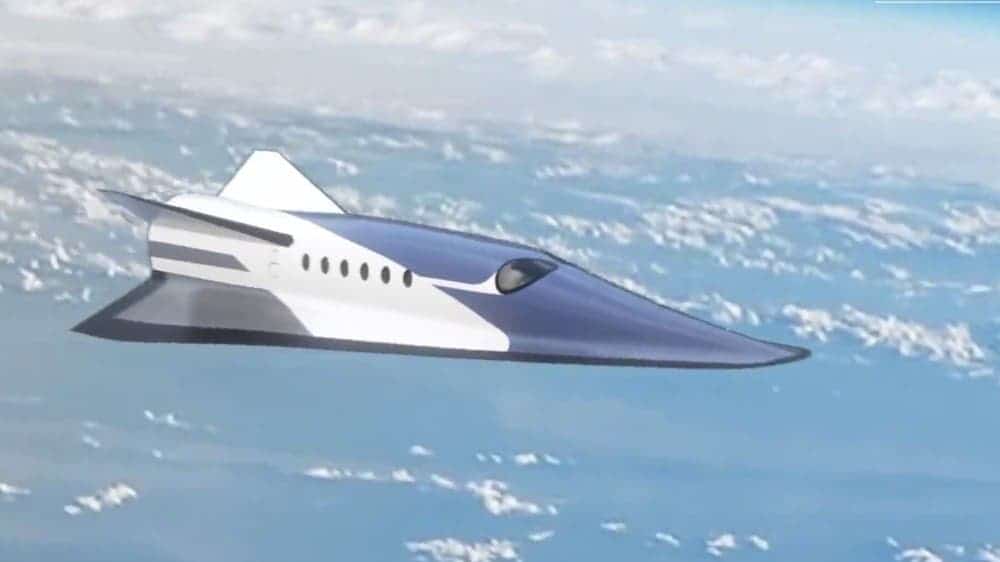
Chinese company Space Transportation wants to take a jab at the growing space tourism market with a winged rocket capable of suborbital travel. The reusable space plane could take wealthy tourists to the edge of space then land them on the other side of the world in no time. A trip from Beijing to New York would only take an hour.
Space Transportation was founded in 2018 and last August it managed to raise $46 million to develop its flagship supersonic spaceplane. Although details are still sparse, a video presentation on the company’s website shows passengers boarding a vertical plane attached to a glider wing with two boosters. Once it reaches a high altitude in the stratosphere, the airplane detaches from the auxiliary power, with the wing and boosters landing back on the launch pad on their own. The airplane, now in suborbital space, proceeds to its destination, back at the launch site after passengers experience a brief stint of weightlessness or in a different destination altogether, virtually anywhere in the world. Touch down is done vertically on three legs deployed from the rear, according to Space.com.

The developers behind the project seem pretty serious about it. So far, they’ve made 10 flight tests for the self-landing booster rockets, the last of which was done in collaboration with a combustion research lab from Tsinghua University.
In many ways, Space Transporation sounds like the Chinese version of Virgin Galactic and, to a lesser degree, SpaceX. In the summer of 2021, Virgin CEO Sir Richard Branson made headlines after he went on an 11-minute suborbital flight, reaching 55 miles (88km) above the Earth’s surface. Just a week later, fellow billionaire Jeff Bezos made it past the Kármán Line, the internationally-recognized boundary of space, at nearly 62 miles (100 km) above Earth’s surface, aboard a capsule launched by Blue Origin’s New Shepard reusable rocket.

Global space tourism is projected to reach just $1.7 billion by 2027, according to a report published in 2021. Virgin Galactic has hundreds of reservations for tickets on future flights, sold between $200,000 and $250,000 each. No reservation data has been made public by Blue Origin, but we can presume they’ll soon start making more commercial space tourism flights.
However, neither Virgin Galactic nor Blue Origin seems to be interested in point-to-point travel. In addition to potential space tourism flights, Space Transportation’s vehicle also doubles as a supersonic plane capable of traveling at more than 2,600 mph. SpaceX had plans for a similar concept when it announced its “Earth to Earth” project in 2017, which repurposes its “BFR” rocket originally meant to carry passengers to Mars. But Elon Musk’s company hasn’t released any details about this city-to-city passenger transport since then, which may mean it could have been scrapped entirely.
Perhaps SpaceX found city-to-city supersonic travel financially unfeasible, but Space Transportation doesn’t seem deterred. It is planning ground tests by 2023, the first flight by 2024, and a crewed mission by 2025. Looking farther into the future, the Chinese startup dreams of testing an orbital crew space vehicle, the kind that SpaceX uses to ferry crew and cargo to the International Space Station, by 2030.
Was this helpful?



